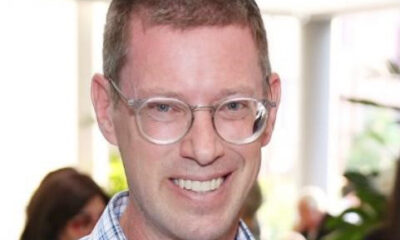
Featured Item

Two seders or one? It’s a diaspora question
When Israelis come to South Africa for Pesach, they often don’t celebrate two nights of seders, but some seem to do so. As Pesach is the best time for questions, the SA Jewish Report reached out for answers.
Dafi Forer Kremer, the director of the Israel Centre in South Africa and the head of the organisation’s aliya department, has been in South Africa for just over a year. She observes only one seder night in South Africa, like in Israel, although she will still be located here for a few more years.
“I can’t keep the two days because I’m only living here temporarily,” she said. “I can’t break my customs.”
She said that her rabbi advised her that since she’s Israeli, no matter where she celebrates the chag, she must observe it according to Israeli traditions and keep only one day of yom tov, but still be aware and respectful of the community around her observing a second night and day.
Rabbi Yossy Goldman, Life Rabbi Emeritus of Sydenham Shul and the president of the South African Rabbinical Association, said this issue dates back to when we didn’t have a fixed calendar.
“Ours is a lunar calendar, and Rosh Chodesh, the first day of the Hebrew month, is when the new moon appears,” Goldman said. “The moon waxes and wanes, so the Jewish people are likened to the lunar calendar, not because we are lunatics, but because we too have had our ups and downs in history.”
He said that before the days of fixed calendars, the Jewish calendar was fixed by the testimony of two credible witnesses, who would come to the high court in Jerusalem and testify that they had seen the first sighting of the new moon.
The news would spread with messengers riding around Israel to advise people when “the first of Nissan, the Hebrew month which we are in now, was declared so they would know when the 15th of Nissan was to observe Pesach. But the messengers could travel only within Israel.”
Diaspora communities, he said, were too far for the messengers to convey the news of the new month. In the diaspora, Jews could still observe the movements of the moon, but there was still doubt about the accuracy of counting the months because the lunar calendar could have either 29 or 30 days in a month.
“It was basically a question of today or tomorrow. Ever since then, diaspora communities have been keeping a second day of yom tov. This way, they could be sure that they observed the mitzvah to have matzah on the first night of Pesach and to tell children the story in the haggadah. One day for sure was correct,” Goldman said.
Today, although there’s no longer doubt about the date and there hasn’t been since one of the great scholars, Hillel, fixed the calendar, the second day is still kept in the diaspora for two reasons, according to Goldman.
First, he said, “a principle in Jewish law states that once something is established then only a greater Beth Din in wisdom and numbers can revoke it. We don’t have rabbis today who would be so presumptuous to say they are wiser than rabbis of ancient times.”
Goldman’s other argument was more anecdotal. He drew parallels to something sacred becoming “worn out”. “For example, a tallis torn and worn out would require you to buy a new one. You can’t chuck the old one in the rubbish; it would be inappropriate. You would treat it respectfully. In the same vein, this second day of yom tov for Pesach and Sukkot has been sanctified and consecrated by centuries of Jewish life and tradition, and has been observed as a holy day by diaspora Jewish communities for millennia. Now that we don’t need it, we can’t just chuck it out. This day has become holy through Jewish people, if not by the Torah itself, and therefore the holiness lasts forever.”
Forer Kremer shared a funny experience from her time in South Africa to show the difference in Israeli and diaspora customs around chaggim. “In Israel, we celebrate one day for Simchat Torah and Shemini Atzeret. On this day, we shouldn’t eat in the sukkah.” However, in the diaspora, Jews traditionally still sit in their sukkot on Shemini Atzeret.
“We invited people for the first yom tov, and only when they arrived for dinner did we realise they had to sit in the sukkah,” Kremer said. As the gracious hosts they are, “we served them their food in the sukkah, and we ate inside”, she said.
She said she liked the idea of observing two seder nights because “on the first night, you’re so exhausted from all the cleaning and preparations, you might fall asleep on the haggadah. But on the second night, you have all the time and energy to explore it and inquire as you should.”










